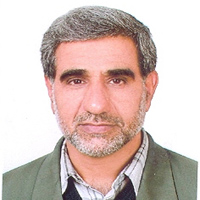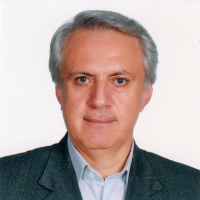The Relationship Between Integral Energy (EI) of Different Soil Moisture Ranges and S-Index in Medium to Coarse-textured Soils
Author(s):
Abstract:
Introduction
Soil physical quality isone of the most important factors affects plants water use efficiency in agricultural land uses. In the literature, some soil physical properties and indices such as S-index, Pore Size Distribution (PSD), porosity, Air Capacity (AC), Plant Available Water (PAW) content, Least Limiting Water Range (LLWR) and Integral Water Capacity (IWC) were mentioned as the soil physical quality indicators. It has been reported that the soils with the same PAW, LLWR and IWC may have different physical qualities. The index of Integral Energy (EI) of the soil moistureranges may differ between the soils with equal soilmoistureover a defined water content range. This index is defined as the required energy to uptake the unit mass of soil moistureby plants. According to this definition, the soils with low EI would have better physical quality for plants roots growth. In this research, we hypothesized that EI of different soil moistureranges were negatively related to S-index which means the plants required energy to uptake the soil water in the soils with high S-index, is lower than the soils with poor physical quality (less S-index). So we examined our hypothesis in medium to coarse-textured soils of Khorasan-Razavi province (Iran).Materials And Methods
This research was conducted in Torogh Agricultural and Natural Resources Research and Education Station in Khorasan-Razavi province, north-eastern Iran (59° 37' 33"-59° 39' 10" E, 36° 12' 31"-36° 13' 56" N). Soil textures of this research station, are classified into loam, silt loam, silty clay loam, clay loam, and sandy loam which is as the same in more than 90% of agricultural soils in Khorasan-Razavi province. Thirty points with different soil textures and organic carbon contents were selected. In order to measure different properties of the soil, two soil samples (5 cm diameter × 5.3 cm length core sample and a disturbed soil sample) were collected from 0-30 cm depth of each point. After conducting required laboratory and field measurements using standard methods, the Soil Moisture Release Curve (SMRC) parameters (RETC program), S-index, PAW and LLWR (measured in matric heads of 100 and 330 cm for the field capacity), IWC and EI of mentioned soil moisture ranges were calculated. In this regard, integration calculations were done by Mathcad Prime 3 software. Finally, the relationships between the measured properties and EI values (for PAW100, PAW330, LLWR100, LLWR330 and IWC) were analyzed using Pearson correlation coefficient and stepwise multivariate linear regression by JMP (9.02) statistical software.Results And Discussion
The S-index of 30 soil samples were between 0.029-0.070 with average of 0.046. These results showed that 90% of studied soil samples had good and very good and 10% had poor physical quality. The lowest average EI values of different soil moisture ranges were observed in sandy loam and silt loam and the highest was observed in silty clay loam soil textures. The EI(IWC) mean value was lower than EI(PAW) and EI(LLWR) mean values which indicated that calculating the EI values based on continuous effects of water uptake physical limitations, resulted in lower required energy for plants to uptake the unit mass of soil moisture . Statistical analysis resulted in significantly negative relations between S-index and two indices of EI(PAW100) and EI(IWC). Multivariate regression analysis showed that EI(PAW100) and EI(LLWR100) could be estimated by shape parameter (n) of SMRC by regression coefficients of 0.95 and 0.22, respectively and the value of EI(IWC) could be estimated by S-index and organic carbon content by regression coefficient of 0.57. The parameter of saturated volumetric water content (θvs) of SMRC and sand percentage were determining factors of EI(PAW330). In this research, it was not obtained the significant relationship between EI(LLWR330) values and measured soil physical properties. According to the results, increment of the shape parameter (n) of SMRC and S-index led to reducing the plants required energy to uptake the unit mass of soil moisture in PAW100 and IWC ranges. We found that EI of different soil moisture ranges could be used to evaluate the soil physical quality between the soils with equal soilmoisture contents.Conclusion
This Research investigated the relationship of PAW, LLWR and IWC EI values with soil physical properties and S-Index in medium to coarse-textured soils. The results indicated that increment of S-index led to decreasing EI(PAW100) and EI(IWC) indices. According to the results, the shape parameter of SMRC and S-index could be accounted for determining factors of EI(PAW100) and EI(IWC) indices values.Language:
Persian
Published:
Journal of water and soil, Volume:31 Issue: 2, 2017
Pages:
386 to 398
magiran.com/p1724924
دانلود و مطالعه متن این مقاله با یکی از روشهای زیر امکان پذیر است:
اشتراک شخصی
با عضویت و پرداخت آنلاین حق اشتراک یکساله به مبلغ 1,390,000ريال میتوانید 70 عنوان مطلب دانلود کنید!
اشتراک سازمانی
به کتابخانه دانشگاه یا محل کار خود پیشنهاد کنید تا اشتراک سازمانی این پایگاه را برای دسترسی نامحدود همه کاربران به متن مطالب تهیه نمایند!
توجه!
- حق عضویت دریافتی صرف حمایت از نشریات عضو و نگهداری، تکمیل و توسعه مگیران میشود.
- پرداخت حق اشتراک و دانلود مقالات اجازه بازنشر آن در سایر رسانههای چاپی و دیجیتال را به کاربر نمیدهد.
In order to view content subscription is required
Personal subscription
Subscribe magiran.com for 70 € euros via PayPal and download 70 articles during a year.
Organization subscription
Please contact us to subscribe your university or library for unlimited access!





